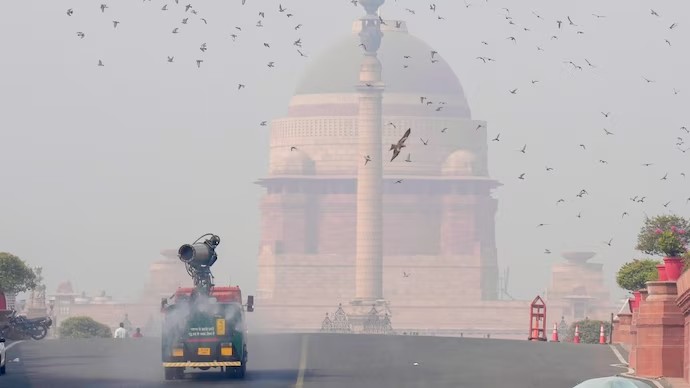Delhi’s pollution is often seen as a local issue, but environmentalist and CEO of iFOREST, Chandra Bhushan, argued that it’s a broader problem affecting North India as a whole. Bhushan, in a recent interview with Free Press Journal, provided a comprehensive perspective on the root causes and potential solutions to the city’s air pollution crisis.
One of the key points Bhushan highlighted is that air pollution in Delhi is not merely a problem isolated to the capital city. In fact, it’s a regional issue affecting much of North India. He stressed that Delhi alone cannot tackle this crisis, as even if the city were to stop all vehicles, pollution levels would only decrease by about 20%.
“Pollution is driven by several regional factors, including stubble burning in neighbouring states like Punjab and Haryana. Despite being an ongoing issue for over 15 years, stubble burning continues due to the widespread use of technology that has replaced manual harvesting,” Bhushan said.
The rising population of Delhi also exacerbates the problem. Bhushan pointed out that as the city’s population grows, so does the demand for energy, leading to higher levels of pollution. However, he also emphasised that air pollution is not an irreversible fate. Countries like the United States and the United Kingdom, once among the most polluted in the world, have successfully cleaned their air. Bhushan believes India can follow a similar path by adopting cleaner technologies.
A simple yet powerful solution, according to Bhushan, lies in shifting from polluting fuels to cleaner alternatives. While vehicles are equipped with pollution control devices, similar measures are absent in household appliances like gas stoves.
Bhushan noted, “Interestingly, one kilogram of biomass, such as stubble, produces 100 times the pollution of one kilogram of petrol or diesel burned in a car, underscoring the significance of managing agricultural residue.”
Bhushan believes it will take decades to fully resolve Delhi’s pollution crisis, but he is optimistic about the impact of immediate measures. By increasing greenery and transitioning to electric vehicles, he estimated that Delhi could reduce pollution by 30 pc within the next 3 to 4 years. The message is clear: tackling pollution requires a regional, multi-faceted approach, with long-term planning and immediate action on several fronts.
